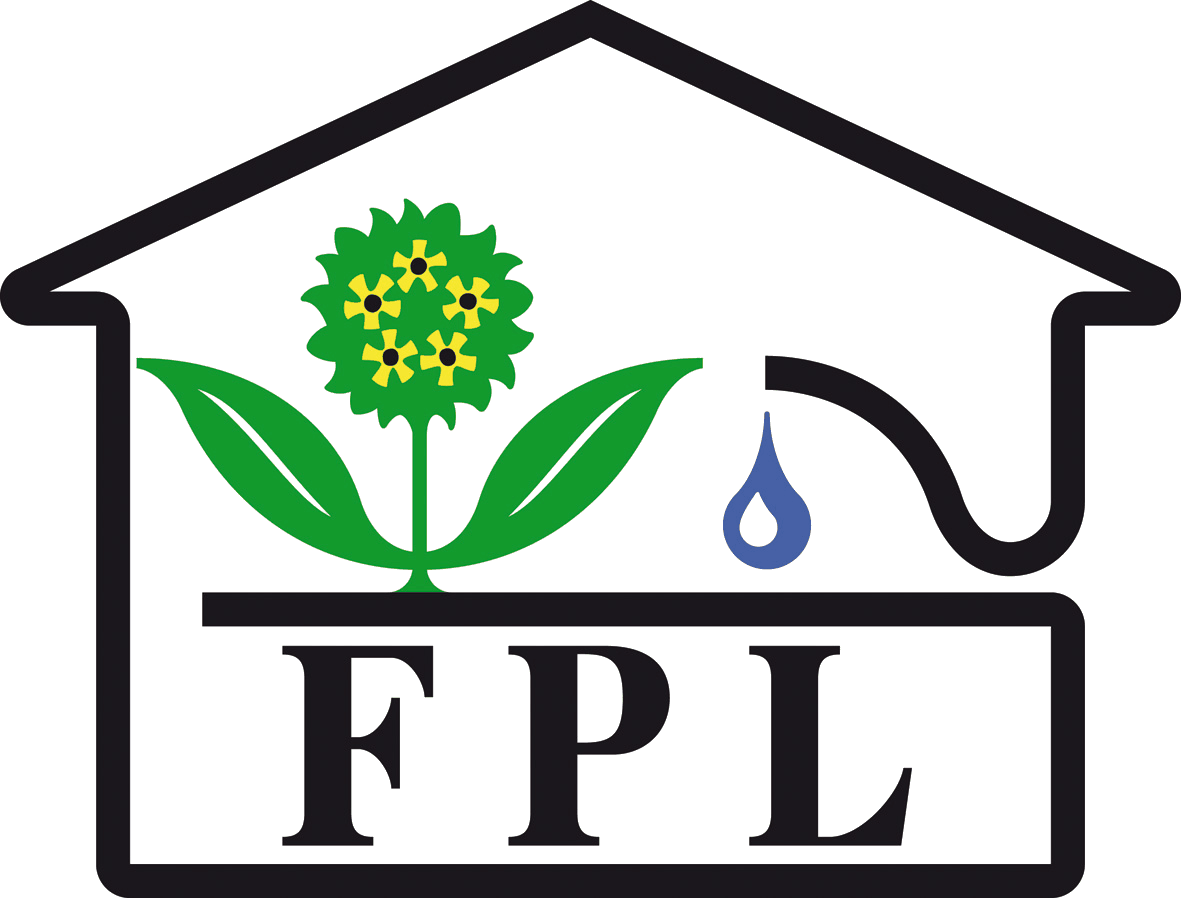
Flowering Plants Ltd
‘Irrigation Systems and Solutions’

 |
Flowering Plants Ltd ‘Irrigation Systems and Solutions’ |
 |
|---|---|---|
|
Water Recycling The Manchester Filter System. Self-cleaning reactive filters for the regeneration of irrigation water. The Background In 1998 we started to build on work being done at Efford by Dr. Tim Pettitt and his team on slow sand filtration. Assays and much practical experience since then have shown that some of our capillary mats, which do not rot, produce the same beneficial microflora as some clean slow sand filters, but in much greater numbers. As a result, it has been very rare indeed to see any water-borne fungal disease in any crop grown on our mats. (One form of mildew has occasionally been seen on some roses.) Efficacy Practical experience since 1999 with Begonias, Spathyphyllum and Zantedeschia has shown that some bacterial diseases are probably suppressed. This and other suppressive effects are so marked that a yeast (Pezica repanda, a.k.a.. Cinnamon mould or Fire mould) has been seen to grow on one of our mats near a mushroom farm. (This is usually eliminated by a weak solution of any wetting agent or soap.) Precedents In looking at how slow sand filters might be made to work reliably, we have taken eight further steps which have proved both viable and robust. 1. “Run-down separators” can take out soft and hard solids down to 0.2mm. They greatly reduce the load on a conventional slow sand filter, and the need to clean it. 2. We supply centrifugal separators which remove dense solids so fine that they will lodge in the pores of your skin. Otherwise, such fines can render sands anaerobic. 3. We choose filter sands which do not block readily, and grows more bacteria relatively quickly. 4. We can offer other media, to suit the chemistry and the microbiology of the water supply. For example we can remove ammonia, nitrates and phosphates. 5. We can digest algae in a filter bed, as we first did for a nursery near Manchester: hence the name of the system. We have deployed the same technology in appropriate systems on several other sites. 6. We can both sustain beneficial microflora in larger bodies of water, and create conditions which are measurably effective in destroying the cell walls of many plant pathogens. This is in use for lake water, reservoirs, mixed sources and on large deep hydroponic systems growing lettuce. 7. Our systems ensure that filtration becomes a positively aerobic process, which encourages a wide range of beneficial micro-organisms. 8. We combine these measures to produce self-cleaning systems which have accepted a range of mucky waters and put out clean, with carefully controlled populations of beneficial microflora and levels of bicarbonate hardness. The original through-put was 1.25 m3/m2 of filter area per hour- about five times the output of a clean slow sand filter. Modern river abstraction systems achieve 50 m3 / hour, or more. 10. Where sludge is encouraged to emerge from a Manchester system, it usually entrains chloride, reducing its level in the treated water from 56 p.p.m. to 21 p.p.m. Practical application Where our capillary mats have been used outside as part of a “water capture system,” measurements since 1999 have shown that reliance on water from sources other than rainfall has usually been reduced by 75%. Rainfall thus captured and recycled has needed no further treatment. The process So far, this appears to involve the following steps:- reaction; digestion; adsorption; enrobement; flocculation; separation; storage. It has produced water which is biologically and chemically suitable for high-value professional horticulture. Practical next steps 1. To calculate the possible financial gain, measure the volumes of water available and to be consumed. We can send you a spread-sheet which makes it relatively straightforward to calculate likely demand for water by a range of crops and supply from rainfall from a range of sources. It produces a graph from which we can estimate the best size of filter to match your needs. 2. Also measure the cost of known fungal damage to crops. 3. To check the most likely set-up of the filter, analyse the chemistry and assay the micro-biological status of the present water supply and drainage water. 4. To prove the efficacy of the proposed system, carry out a “bucket-scale” trial. 5. Confirm the budget, and compare it with your “pay back” criteria. |
|
|---|---|---|